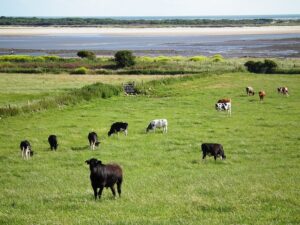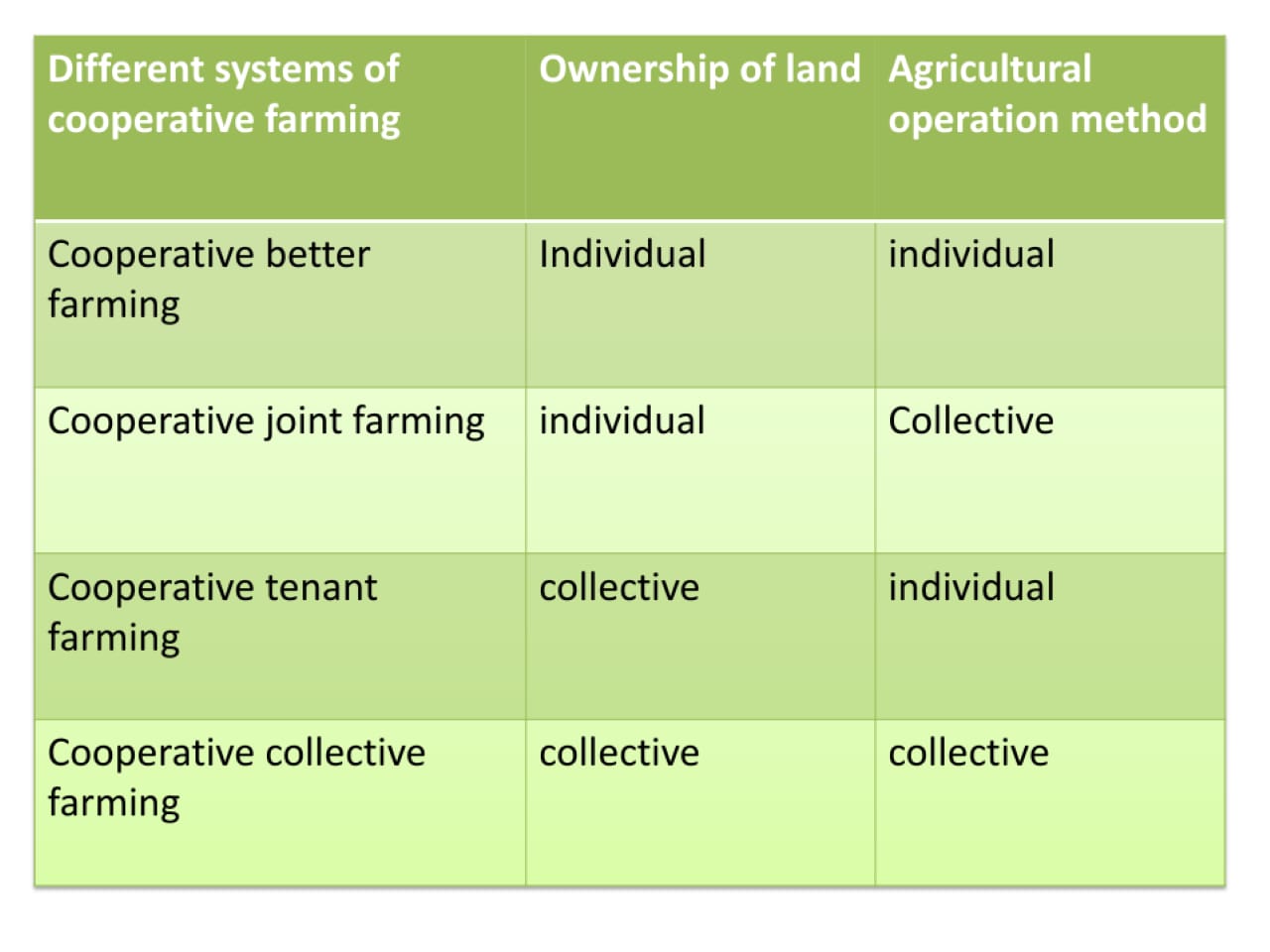“Exploring the Diversity of Farming Types: From Diversified to Cooperative, Understanding the Varied Landscape of Agricultural Practices”
The article outlines various farming types and systems, ranging from diversified and specialized farming to cooperative and collective farming. It highlights the distinctions between individual, capitalist, state, corporate, joint, and collective farming, shedding light on the diverse approaches to agricultural production worldwide. Additionally, it emphasizes the significance of understanding these farming types in addressing issues such as crop diversification, economic sustainability, and community development.
The classification of farming types and systems are as follows-

A)Farming types
According to Johnson, “when farms in a group are quite similar in the kinds and proportions of the crops and livestock that are produced and in the methods and practices followed in production, that group is described as “Types Of Farming”.
1.Diversified farming-
A farm on which the income from the single production is less than or not equal to 50% of the total farm income, is called a diversified farm and such farming is known as diversified farming.
2.Subsistence/Marginal farming-
In this type of farming crops are raised for farmer’s family consumption only , after that if any surplus to sell in the market then he goes for it, except on occasions when he was forced sale to get some cash.
3.Specialised farming-
In this type of farming, the income from a single product is more than or equal to 50% of the total farm income .
4.Mixed Farming-
In such type of farming crop production is done along with livestock raising or dairying for the purpose of milk and mean in our country. Mixed farming is a diversified faring where livestock and crop productions are inter-dependent. For example, often the dung from the cattle serves as a fertilizer to the crop, hence minimizing the cost of cultivation.
5.Dry farming-
It is the production of useful crops without irrigation n the land which receives less than or equal to 50 cm (20 inches) rainfall. Natural factors force the farmers to adopt dry farming. The people in such regions are struggling their life for livelihood.
6.Ranching-
Ranch lands are the lands where agricultural practices are not adopted i.e. land is not utilized for raising crops but the natural vegetation used for grazing the livestock. Australian sheep ranching farm is well known in the world.

B)Systems of farming
According to Johnson, “the combination of product on a given farm and the method and practice that are used in the production is known as systems of farming”
1.Individual or peasant farming-
In this farming farmers himself is the organizer or manager of the farm and his whole family helps in decision making. Here crop production done using small land holding without expensive technology. Main objective is to fulfill family needs and not maximization of the profits. 70% of the Indian family practicing this system.
2.Capitalistic farming-
In this type of farming, the main objective is to maximize the profit using improved technologies and methods of agriculture on big farms. In India capitalistic farming is restricted to tea, coffee and rubber.
3.State farming-
Here the main objective is not always to maximize profits, but to carry out farm research works and demonstration as well to increase the amount of quality seeds. Here the farms are managed by Govt. officials and agricultural workers are paid wages generally on monthly basis.
4.Corporate farming-
This type of farming systems are completely managed by operating body of the corporate sectors. Farming done in large lands and big amount of capital required. This is mostly done in USA and some parts of India like Maharashtra and Tamil Nadu.
5.Joint farming-
Here two or more farmers carry out the farming practices jointly by pooling their resources and lastly divide the produce according to the previous fixed ratio.
6.Collective farming-
Here the ownership of the agricultural assets are invested to the society but not to the individual member. All the members are treated equally and the members are divided into labor-brigade. The farm is managed by elected committee. Govt. takes a certain amount of produce from each collective farm on the rate of the previously announced price. there are 3 main forms of collective farming-TOZ, Kolkhoz, Commune.
7.Cooperative farming-
In this farming al the members or farmers pool their land, labor and capital on the voluntary basis and perform the farming operations together to get mutual benefit.

know more about-Farmers’ Indefinite Dharna In Punjab Over Non-Payment Of Sugarcane Dues











+ There are no comments
Add yours